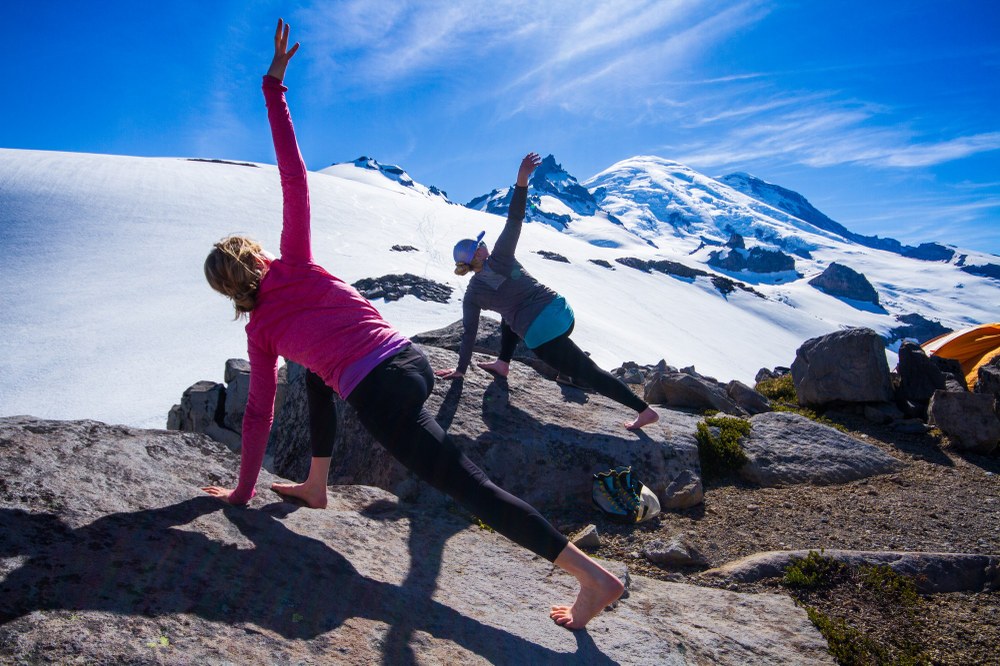
When I took the Basic Climbing class in 1999, a fellow student shared his motto about overnights: "If I'm not a little cold, hungry, and uncomfortable, I took too much." Anyone who knows me knows I love my puffy down coat - even in summer - and seat heaters in winter. To someone who has carried booties, a pillow, and sometimes three layers of down on my climbs, that was radical.
Fast forward two decades and I better understand his advice. As a society of people used to being comfortable, we’re losing our ancestral abilities to tolerate extremes. This translates into less resilient bodies down to the tiniest cellular level. We travel from homes to office spaces via our cars, always in "room temperature" (typically defined as 68-72 degrees). Enter Wim Hof, also known as Iceman, a Dutch athlete noted for his ability to withstand extreme cold. He trains people to be tolerant of extremes through cold therapy, breathing techniques, and consistent practice.
WHAT:
If you’ve ever participated in a polar bear plunge in Lake Washington (one New Year's Day was enough for me), or alternated between the heat of a hot tub, whirlpool, or sauna and a cold shower, you probably already understand the benefits espoused by Hof. But if the thought of bathing in icy water has you shivering, try taking the first step toward increased resilience by visiting your own backyard barefoot, in minimal clothing, regardless of the temperature.
WHY:
Known as earthing or grounding, spending as little as ten to fifteen minutes every day in dewy grass first thing in the morning does several things: first, early morning sunlight in the eyes and on our skin helps reset Circadian rhythms that can get thrown off by artificial light bombarding us constantly. This can enhance energy and alertness, and supply us with fresh air as a bonus. Second, touching bare skin to grass, sand, fresh or salt water, concrete, or dirt helps us take in energy through the earth’s negatively charged surface. Numerous positive effects include reduced inflammation, increased quality of sleep, and increased recovery from challenging exercise. As fall approaches winter and temperatures fall, your body will adapt to frosty conditions much as it does to progressively harder workouts.
HOW:
First thing in the morning as soon as you wake up, go outside barefoot to a patch of grass in a bathing suit or shorts and t-shirt and remain outside in direct exposure to sunlight (even if it's cloudy) for ten to fifteen minutes. If you live in an apartment or on a houseboat, consider visiting a nearby park. If you are at the beach, walk barefoot on the sand or better yet, in the surf. If you like, do morning stretches or yoga poses. When you take a shower, end with 30-90 seconds in cold water (below 70 F). Doing so may help increase endorphins, improve circulation, boost your metabolism, and fight off common illnesses. Now that's what we call stoking the furnace!
For more information, see healthline.com/health/cold-shower-benefits. To learn more about Wim Hof's techniques, visit wimhofmethod.com. For more on earthing or grounding, first written about by Clint Ober, see https://www.earthinginstitute.net .
Courtenay Schurman is an NSCA-CSCS certified personal trainer, Precision Nutrition Level 2 Certified Nutrition Supercoach, and co-owner of Body Results. She specializes in training outdoor athletes. For more how-to exercises and tips, visit her website at bodyresults.com or send a question to court@bodyresults.com.
This article originally appeared in our Fall 2018 issue of Mountaineer Magazine. To view the original article in magazine form and read more stories from our publication, click here.
Add a comment
Log in to add comments.What to do when it's dark as you go to and come home from work in the PacNW in winter?
 Courtenay Schurman
Courtenay Schurman